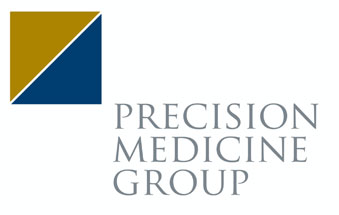
Life sciences companies have many motivations for launching ESG programs and reporting. For businesses in Europe, ESG has become a regulatory obligation with stringent timelines and requirements. Life sciences firms in the supply chains of larger companies are under pressure to decarbonize in order to help big pharma achieve ambitious climate targets. Increasingly, for large cap companies, annual ESG reporting is seen as necessary to keep pace with peers and industry expectations. Investors add their own perspectives to the dialogue, with many requiring companies to meet specific ESG requirements ahead of proxy season each year and to satisfy portfolio stewardship expectations.
These motivations are all valid, but they hold one thing in common—each is framed as a reaction to external pressure. Whether responding to market expectations and requirements or legal and regulatory mandates, negative framing short-changes the real value of ESG. Companies treating ESG as a compliance exercise are less likely to fully realize its benefits. In this article we propose that the strongest arguments for practicing ESG encompass what a company stands to gain by proactively engaging in ESG, rather than what it may lose if it does not. By refocusing on ESG as a strategic tool with positive return on investment (ROI), companies prime external stakeholders to view the choice positively and position themselves to maximize the benefits of practicing ESG.
Companies create value through ESG in a variety of ways. From increasing employee engagement and innovation, to expanding product access to diverse populations, life sciences companies are leveraging ESG to drive business outcomes with positive returns on investment. The key to gaining board and executive buy-in to ESG is to frame the investment in terms of real, tangible benefits. Understanding the sources of those benefits and being able to explain the causal mechanisms for generating ROI empowers sustainability-minded executives to advocate successfully within their companies to launch ESG programs and reporting.
Talent Acquisition
In an industry fueled by innovation, ESG’s positive impact on talent acquisition is one of its most compelling benefits. Biotech, pharma and other life sciences companies compete in the talent market for highly skilled, deeply specialized workers with advanced degrees and a passion for research. The pipeline is highly competitive, and companies must differentiate themselves in order to attract the next generation of talent. The life sciences labor market remains one of the tightest in the country, with unemployment typically well below 1%.[1] Despite recent biotech layoffs, companies still face stiff competition attracting new employees, and robust ESG programming can be a strong differentiator. Forbes recently reported that 83% of Gen Z survey respondents take prospective employers’ commitments to diversity, equity and inclusion (DEI) into account, and 3 in 4 would reconsider an offer from a company if they found its DEI efforts lacking.[2] An annual ESG report provides companies the opportunity to advertise their sustainability commitments and achievements in a personal and compelling way, with the needs and desires of their future workforce in mind.
Talent Retention
Attracting top talent in the life sciences is only half the battle—in an industry with high potential for stress and burnout, both new hires and seasoned professionals expect their employers to provide increasingly strong motivations for them to stay. A recent industry report found that 73% of survey respondents in the life sciences field are on the verge of burnout, and nearly 80% are either actively or casually pursuing new opportunities.[3] Against this backdrop, it is imperative that employers take purposeful action to improve employee engagement and satisfaction. Establishing two-way dialogue with employees, leveraging annual employee experience surveys, promoting flexible working arrangements, prioritizing work-life balance, providing a clear path and tools for career advancement, fostering transparency and trust in leadership, creating a culture that embraces differences, and working towards pay and advancement equity for diverse employees are just some of the ways strategic ESG practices can positively impact talent retention.
Engagement and Innovation
Increasing diversity, fostering inclusivity and working to improve equity are prominent objectives within most ESG programs, irrespective of industry or firm type. The most obvious benefits of DEI are realized by employees. People working for companies that practice effective DEI are, on average, more engaged and motivated, more comfortable being authentic at work, and more likely to stay long term. The benefits extend beyond the personal, to the company as a whole. Companies that value differences and encourage self-expression foster greater collaboration and innovation, fueling scientific discoveries and increasing the odds of success. A recent large-scale study by Boston Consulting Group found businesses with diverse leadership teams generated 19% more revenue from innovation relative to less diverse peers.[4] This finding makes sense given the importance of diverse viewpoints, perspectives, backgrounds and skills in driving innovation. Companies with diverse leadership, corporate strategy and product development teams are more likely to develop medicines and technologies addressing the unmet needs of diverse populations. Sales and marketing teams that are diverse are better able to generate materials that resonate with diverse customers and patient populations, providing companies an advantage when moving into new markets.
Product Accessibility
Affordability and access are critical issues for life sciences companies to address not only to benefit patients, but also to maximize revenue and improve the company’s ability to engage new markets. Companies that actively engage with healthcare providers on pricing early in the commercialization cycle are better positioned to negotiate favorable pricing agreements. Beyond the pricing lever, companies have multiple channels to positively affect access through strategic ESG initiatives. Research on the Social Determinants of Health (SDOH), which is increasingly visible in the life sciences industry, reveals ways in which the non-medical social, economic and political circumstances in which people live their lives influence health outcomes. From mitigating prescription drug non-adherence to overcoming barriers to clinical trial participation, companies enacting targeted initiatives to incorporate SDOH in their approach to access and affordability reap substantial benefits. Research on SDOH suggests within the first year of treatment for chronic conditions, up to 50% of patients stop adhering to prescribed therapies, substantially depressing revenue for drug and treatment manufacturers.[5] Salient contributors to non-adherence are cost, health literacy, traditional beliefs, trust, transportation issues, misinformation, food and housing insecurity and isolation, each of which companies can begin addressing through targeted ESG access and affordability initiatives.
Operational Improvements
One of the most obvious, but sometimes overlooked, benefits of ESG is in helping organizations identify and mitigate sources of operational inefficiency. From energy efficiency to supply chain improvements, ESG gap analysis can help companies prioritize initiatives that improve efficiency. Many ESG efforts such as undertaking energy audits across high use facilities, retrofitting existing buildings and processes with efficient lighting, appliances and HVAC equipment, and engineering environmental sustainability into new built spaces, reduce energy consumption and spending across the organization, positively impacting the bottom line. According to the US Department of Energy (DOE), DOE-sponsored energy audits of manufacturing facilities identify, on average, efficiency improvements equal to 6 – 8% of total energy use by sites.[6] Supply chain enhancements such as identifying potential bottlenecks, ensuring redundancy and anticipating geopolitical or economic impacts to critical inputs help companies improve resiliency while avoiding expensive and inefficient short-term fixes for supply chain vulnerabilities.
Risk Mitigation
Perhaps the greatest benefit of ESG relates back to its original purpose—as a tool to identify, prioritize and address sources of business risk. Through materiality assessments, companies harness internal and external perspectives to identify the set of business risks facing a company. This foundational ESG practice, paired with gap analysis and roadmap development, allows companies to handle sources of risk proactively and systematically, improving enterprise-level resilience. Climate-related risk is emerging as a salient business risk for many life sciences companies. Whether businesses have manufacturing sites located in coastal regions exposed to flooding, refrigerated storage facilities located in cities prone to summer power outages, or water intensive production facilities in water-scarce areas, companies can leverage ESG reporting frameworks such as the Task Force on Climate-related Financial Disclosures (TCFD) to assess and mitigate sources of climate-related risk. Incomplete quality and patient safety processes and insufficient operating procedures governing employee health and safety are examples of social risk factors addressed through ESG. Governance vulnerabilities such as lax oversight of data privacy or missing checks and balances in governance systems can be identified and remediated through ESG. Companies with a disciplined and systematic approach to ESG derive significant ROI on their investments in risk mitigation.
Getting Started
As with any practice, effective ESG is not accomplished all at once, and it is never complete—incremental improvement is key. Foundational practices such as materiality assessment, gap analysis and roadmap creation ensure companies’ efforts are focused, efficient, and aligned with enterprise-level objectives. Effective ESG is a powerful tool for value creation, driving quantifiable benefits across a wide array of business objectives and functional areas. Understanding and being able to articulate the business case for ESG allows sustainability-focused leaders to achieve buy-in across leadership to launch and sustain successful programs. From boosting productivity and innovation to gaining a competitive advantage in new markets, ESG should be recognized and prioritized as a strategic tool for business development and organizational success.
[1] https://marketing.biospace.com/employer-insights/2022-state-of-the-recruitment-market; https://www.cbre.com/insights/reports/us-life-sciences-talent-2022
[2] https://www.forbes.com/sites/forbesbusinesscouncil/2023/06/09/attracting-and-retaining-gen-z-through-diversity-and-inclusion/?sh=3411ebca7b27
[3] https://f.hubspotusercontent20.net/hubfs/4413123/Insight%20Reports/202201%20-%20State%20of%20the%20Recruitment%20Market/Report/202201%20-%20State%20of%20the%20Recruitment%20Market%20-%20WPQ.pdf?__hstc=180086843.d38292f5335b76e950bab56ffadcae78.1699384475353.1699386871250.1699392244465.3&__hssc=180086843.2.1699392244465&__hsfp=4253508547
[4] https://www.bcg.com/publications/2018/how-diverse-leadership-teams-boost-innovation
[5] https://www.hmpgloballearningnetwork.com/site/jcp/pharma-insights/bringing-social-determinants-health-life-optimize-health-outcomes-patients
[6] https://www.nrel.gov/docs/fy11osti/50365.pdf

